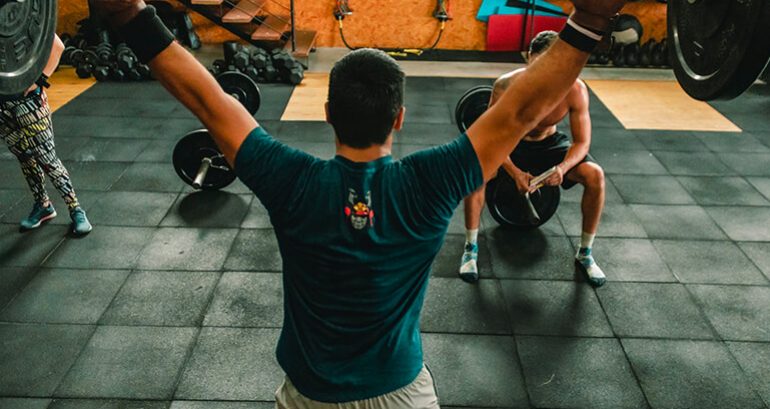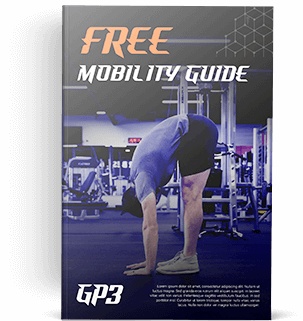Key Points:
1. Training your tendons is just as important as training your muscles.
2. Tendon training is vital for preventing injury and increasing athleticism.
3. Specific movements that lengthen your muscles at load are required to make your tendons stronger.
Estimated reading time: 5-10 minutes
Did you know you should train your tendons? Were you even aware that you could? As it turns out, tendon training is the secret to both massively increasing your athleticism and preventing injuries.
So, why haven’t you heard of this, and why don’t you do it? Here’s the short answer to both questions. First, mainstream exercise science is lagging a bit behind on this topic, partially because stressing one’s tendons on purpose used to be considered somewhat unsafe. Like pretty much any style of exercise, it’s not inherently unsafe, but the potential for injury does exist if you don’t know what you’re doing. Tendon training is no different than heavy squats or deadlifts in that regard. Second, you probably have trained your tendons in the past, only perhaps not knowingly and intentionally.
Before we dive more deeply into why tendon training is so beneficial and how to do it, I’m going to give a bit of background information on connective tissue, in case anyone needs a refresher.
What are tendons?
Tendons are a type of “dense regular connective tissue,” made of collagen, with the primary job of connecting muscle and bone. You can remember this by recalling that unless they’re being named after ancient Greek heroes, we typically refer to tendons by their associated muscle: hamstring tendon, biceps tendon, quadriceps tendon…you get the idea.
Another type of “dense regular connective tissue” is known as ligaments, and these connect bone to bone. They also have much more complex names. The dreaded ACL, which we never want to hear that we injured, is the anterior cruciate ligament.
Finally, there’s a third type of “dense regular connective tissue,” known as fascia. It surrounds muscle and other structures. Fascia is incredibly important, but that’s a topic for another post.
Here’s why that brief anatomy lesson was important. Conventional wisdom used to say that it’s not feasible to train connective tissue. This was primarily thought to be the case because connective tissue receives much less blood flow than muscle tissue, and takes much longer to heal than other types of tissue. For context, depending on the severity of the injury, a torn muscle can heal in 4-12 weeks and a broken bone usually takes “only” 6-8 weeks to fully heal. For these injuries, surgery is only needed in extreme cases.
By comparison, rupture your Achilles Tendon or ACL, and you’re looking at 9 months or longer before it fully heals, and you will definitely need surgery if you want to get back to your previous physical capabilities.
Even minor connective tissue injuries are no fun. Ask any rock climber about strained finger tendons, (it happens all the time) and they’ll tell you that it can easily take 6 months or more for them to feel completely normal again.
Enough background info…why tendon training?
To put it simply, tendons are beasts. Due to their dense structure, they can absorb and handle way more force than muscle tissue. When stretched, they also spring back into position very quickly when the tension is released. This is the secret behind athletes who can run incredibly quickly or jump insanely high. If you’re super fast or bouncy, you can thank your strong tendons. If you want to become stronger or faster, train those tendons! I promise we’ll get to how to do this in a moment, but I’m going to make you suffer and wait for just a bit longer.
There’s another huge benefit, besides simply being more athletic. That bonus is injury prevention. I read this article in the summer of 2019, and it stuck with me for a number of reasons. The absolute epidemic of injuries among young basketball players described by the article was quite memorable, as were the passages talking about the shockingly underdeveloped ability of many high-level college athletes when it came to basic movements like squats, lunges, and balancing on one leg.
However, the most memorable part was a quote from a former Chicago Bulls Athletic Trainer, now head of a 3rd party performance center, “We would joke that half of these athletes are so good that they could almost out-jump their ability to land.”
Well, when tendon training is neglected, this can become literally true. It is possible to train your muscles in a way that they become stronger than their corresponding tendons. And, put simply, that’s bad. Really bad. Especially if you’re a highly active person. Inevitably, your sport or life will put you into a position or situation where even these ridiculously strong muscles you’ve developed can’t handle all the force they’re put under. When this happens, the force travels to the tendon, because they’re supposed to be able to handle more force than muscles. It’s part of what they’re designed to do. But…if a weak tendon is asked to absorb force that a strong muscle couldn’t deal with, guess what happens? Yup. Ruptured tendon, six to nine months until full recovery. Yikes.
So, how do we prevent this? The answer has to do with short vs. long range training, a topic about which I wrote an entire blog post. We’ll cover the basics here, but I definitely encourage you to read it.
Short vs. Long Range Training
To put it simply, short range training, which challenges a muscle when it’s as short and contracted as possible, only benefits your muscles. Long range training, which challenges a muscle when it’s as stretched and extended as safely possible, leads to increased capacity of tendons and muscles. According to Keegan Smith, founder of the Athletic Truth Group Coaching Program and former professional rugby strength coach, modern performance training is dominated by short range movements and neglects long range movements almost entirely.
So, because tendons aren’t being challenged and thus, strengthened, athletes are literally out-jumping their ability to land safely. There’s a lot more force upon landing compared to takeoff, thanks to a little something called gravity, and that force has to go somewhere. When it goes to under-prepared tendons, disaster can strike.
Luckily, long range movements can solve this problem almost entirely. I know you’re itching for some examples, so let’s start from the ground up. For the ankles, slantboard tibialis raises and slantboard calf raises would do the trick. For the knees, we’ve got a whole bunch of options, including Nordic Hamstring Curls, Reverse Nordics, ATG Split Squats, and the VMO/Hack Squat. For the hips, ATG Split Squats again can turn you into an injury-proof, high-jumping, fast-sprinting machine.
To again quote Keegan Smith, “These (long range movements) are the exercises that make shit athletes great.”
A word of caution before you jump right into long range training…
These movements can be dangerous if you try them before you’re ready. This is likely why they’ve been so underutilized in the world of college and professional strength training. A strength coach has limited time with their athletes, and their first and most important responsibility is to not injure their athletes in the weight room. Thus, potentially risky but undoubtedly beneficial movements often get passed over.
This results from the simple reality of many strength coaches being responsible for too many athletes and having too little time to work with them. However, typical, “safe,” short-range dominant training has the unintended consequence of actually increasing athletes’ risk of injury.
So, how do you know if you’re ready for long range movements?
First, you actually start with short range exercises. These movements are still highly beneficial, as they develop the all-important mind-muscle connection, pump blood into their target muscle tissue, and raise the temperature of said muscle tissue. All of these things combine to make long range training much safer and more effective.
Then, it’s best to start training long range movements using bodyweight, or even less than bodyweight, via bands or other methods of assistance. Then, work on progressively overloading the range of motion, operating inside but at the edge of your comfort zone, until your body becomes accustomed to its newfound ranges of motion.
Take the Nordic Hamstring Curl, for example. This is a vital exercise for increasing top speed and stride length. However, most people, (even athletes!) can hardly control their torsos to a 45-degree angle, let alone complete a full rep. Here’s where assistance, in this case bands, prove their worth. You develop the ability to control your body throughout the entire range of motion without subjecting your tendons to an amount of force they can’t yet handle.
Tendon training considerations
And that’s an important piece to keep in mind. Tendon training is stressful on your body. Tendons make adaptations in the same way muscles do. Training causes microtears, and the body compensates by building the tissue back bigger and stronger than before. Now, due to the aforementioned low supply of blood to connective tissue, it typically takes longer for tendon adaptations occur. This also means the risk of overtraining is high, so it’s best to start with no more than one session session per week when it comes to loaded long range movements.
Make no mistake, however. That “small” amount of training can work wonders. Since your body likely isn’t used to training this way, it’s almost like getting your “noobie gains” all over again. Let’s use my progression with Nordic curls as an example. This transformation took 12 weeks, and maybe 18 training sessions, max. I never trained Nordics more than twice per week, and even that was a rare occurrence.
I see it time and time again with my clients, too. They’re shocked but excited at how quickly they see progress with long range exercises like the Nordic Curl. It’ll be a month of steady, incremental gains, and then bam! Massive step forward one week to the next, seemingly out of nowhere. That’s due to the tendons growing stronger.
When you’re ready, start training your tendons with some long range movements, and enjoy the results. More protection against injury, more strength, and more athleticism. What’s not to like?
Before you go, I’d love to hear from you! Have you ever tried tendon training before? If so, how has it worked for you? If not, what questions do you have about it?

